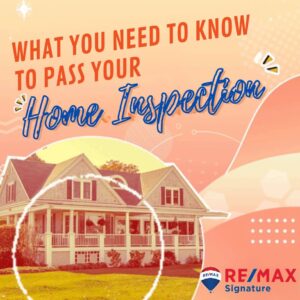Things You Need to Know to Pass Your Home Inspection
What Every Seller Should Understand Before Listing Their Home
Homebuyers may vary in style and preferences, but they all share one concern: what’s beneath the surface of your home? They want to know the property is structurally sound and free from hidden problems that could cost them later. That’s why nearly every serious buyer requests a home inspection—and why being prepared can make or break your sale.
According to experts, there are over 30 potential issues that might arise during an inspection. Here, we’ve highlighted the 11 most common problems that frequently lead to costly delays—or failed deals. The good news? Many of these can be identified and addressed before you list your home.
11 Key Issues to Address Before a Home Inspection
1. Defective Plumbing
Plumbing issues are typically seen in two forms: leaks and clogs. You can often identify leaks visually, and an inspector will check water pressure by turning on faucets and flushing toilets.
- Low pressure or the sound of running water may signal undersized pipes.
- Rusty water at the tap could mean corroded pipes—an issue that impacts water quality and buyer confidence.
2. Damp or Wet Basement
Buyers and inspectors will look for:
- Powdery white mineral deposits (efflorescence)
- Mildew odors
- Stored items directly on the floor (a sign of homeowner confidence in dryness)
Fixes range from sealing minor cracks ($200–$1,000) to full waterproofing ($5,000–$15,000). Weigh these costs against your asking price.
3. Inadequate Wiring or Electrical Service
Your home should have at least 100-amp service, clearly labeled. Outdated or overloaded systems, especially “octopus” plug arrangements, are red flags. Inspectors check for safety hazards and compliance with modern standards.
4. Poor Heating or Cooling Systems
An old or dirty furnace, poor insulation, or uneven heat distribution can all raise concern.
- Inspectors especially scrutinize heat exchangers in forced-air gas systems, which can emit carbon monoxide if cracked.
- The typical furnace lifespan is 15–25 years—anything older may require replacement.
5. Roofing Problems
Signs of roof trouble include:
- Curling, cracked, or missing shingles
- Leaks around flashing or valleys
- Improper drainage from gutters and downspouts
Left unchecked, external roof damage can cause internal water damage, mold, and rot.
6. Damp Attic Spaces
Improper attic ventilation or insulation can cause moisture buildup, mold, and even structural damage. This often leads to premature roof failure. Repairs may cost $2,500 or more, depending on extent.
7. Rotting Wood
Inspectors look closely at window and door frames, trim, siding, decks, and fences. Even freshly painted wood may be probed for rot. Replacing rotted wood can help maintain your home's appearance and structural integrity.
8. Damaged Masonry
Cracked or deteriorating bricks and mortar can lead to water intrusion and structural instability—especially in chimneys. Repointing or rebuilding may be expensive but necessary to avoid more costly issues later.
9. Unsafe or Overfused Electrical Circuits
Drawing too much power from a circuit is a fire hazard.
- Many homes still use 15-amp circuits, which may be inadequate for modern appliances.
- Replacing a fuse panel with a breaker panel can cost several hundred dollars—but adds value and safety.
10. Insufficient Security Features
Inspectors look for essential safety measures, including:
- Deadbolts
- Secure window and patio locks
- Smoke and carbon monoxide detectors in every bedroom and on each level of the home
These features not only improve safety but may influence buyer decisions and even home insurance rates.
11. Structural/Foundation Issues
This is one of the most serious concerns for buyers. Inspectors will examine:
- Cracks in the foundation
- Uneven floors or bowing walls
- Signs of shifting or settling
If structural integrity is compromised, repairs can be extensive—and expensive.
Final Thoughts
No homeowner wants their sale derailed by unexpected inspection findings. By proactively addressing these 11 common problem areas, you increase your chances of a smooth sale, a stronger offer, and fewer negotiations or delays.

